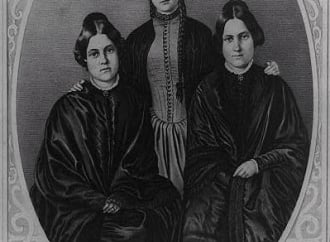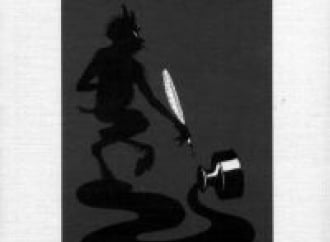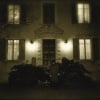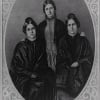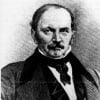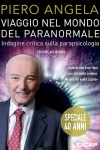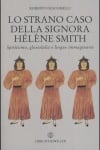Tales of ghosts have fired the popular imagination since earliest times. Even in today's technologically and scientifically advanced world, belief in ghosts remains strong. A 1996 Gallup poll revealed that 33% of Americans believe that houses can be haunted, and 30% believe that ghosts or spirits of dead people come back in certain places and situations.
Given such healthy percentages, America has become a lucrative market for ghost claims. Maybe the most famous, and certainly the most mass-marketed tale of haunting is that of the alleged "Amityville Horror." In December, 1974, George and Kathy Lutz moved into a new home in Amityville, New York, a community on Long Island. Twenty-eight days later, the Lutzes fled the house, claiming they had been driven from their home by demonic forces. The claimed impetus for the demonic haunting? Little more than a year earlier in November 1973, the house had been the site of tragic murders. Ronald Defeo had shot to death his parents, two sisters, and two brothers. At trial, Defeo had claimed he had heard voices in the house instructing him to kill.
Soon a book was in the offing. The Amityville Horror, boldly subtitled A True Story, came out in 1977 and promptly went through thirteen printings by 1978. In July of 1979, the book was released as a box-office movie hit, leading to multiple sequels still in video release today. But upon release of the film, the Lutz's attorney, William Weber, revealed that the elaborate tale was a hoax. "We created this horror story over many bottles of wine that George Lutz was drinking," Weber told the Associated Press. "We were really playing with each other. We were creating something the public wanted to hear about."
Since tales of ghosts can be alluring to the imagination and headline grabbing, it is wise to hold to methods of inquiry that evaluate such claims rationally and scientifically. In over twenty five years of ghostbusting, an international organization, the Committee for the Scientific Investigation of Claims of the Paranormal (CSICOP) has yet to identify a haunted place, only many psychological effects leading to haunted minds.
In some instances, the phenomenon is merely an illusion or misperception. For example, at Toronto's historic Mackenzie House, late at night, ghostly footfalls on the stairs were heard by different caretaker families even though there were no intruders in the house at the time. Investigation revealed the sounds were coming from a parallel iron staircase in the building next door, and that the unknown entities were members of the cleanup crew.
Another common haunting phenomenon is a simple but powerful type of hallucination. It is typified by another example from the Mackenzie House, when a caretaker's wife woke to see a man in a frock coat standing by her bedside. In such cases, although the witness' eyes are open, he or she may nevertheless be dreaming, resulting in a vivid experience known as a "waking dream."
In addition to the bedside phantom, some percipients report seeing apparitions -- "as real as real" -- while clearly awake. Such persons sometimes even have a personal, household ghost or "familiar", and may be classified as fantasy-prone personalities. These individuals may also assume identities as self-styled mediums or psychics, religious visionaries, or UFO abductees.
Then there are the deliberate hoaxes. Poltergeist ("noisy spirit") cases tend to be of this type. Often the disruptive phenomena, such as objects flung across a room or lights turned off and on, can be traced to a child in the household. While parapsychologists generally attribute the disturbances to energy forces associated with puberty, the evidence of numerous cases reveals the effects are actually deliberate acts of hostility or means of attracting attention.
The power of suggestion is a major influence in spreading ghostly reports. One witness may persuade another of an event, a phenomenon known by the French expression folie a deux or "folly of two", or there may be a bandwagon effect involving many persons, a type of influence called psychological contagion. In the case of a haunted lodge near Santa Cruz, California, for instance, where ghostly antics were reportedly proliferating, the owner recognized how the "ghost" was really influencing his staff: "That's all they talk about," he told SKEPTICAL INQUIRER magazine. As a centerpiece of conversation, tales of ghosts and spirits fed off each other, prompting and supporting further speculation among the staff about strange happenings and perceived occurrences.
Over the centuries, perceptions of ghosts have evolved. Each historic period perceives an apparition in terms of its own cultural attitude. During the Inquisition, sightings featured souls trapped in purgatory. The Victorian age brought visions of silent gray ladies, while modern day reports include everything from sightings of tragically killed children to turn-of-the- millennium demons. Skepticism of extraordinary claims like those of hauntings, however, should remain constant. So next time you hear a tale of a haunted house, or if at some astounding moment you think you have witnessed a ghost, resist the temptation to instantly believe, and always insist that verifiable, sound evidence be provided.
Joe Nickell is investigative columnist for SKEPTICAL INQUIRER, The Magazine for Science and Reason. He is author of fifteen investigative books including Entities, Secrets of the Supernatural and the forthcoming Crime Science. He has over twenty-five years experience investigating hauntings and haunted places.
Matt Nisbet is Public Relations Director for the Committee for the Scientific Investigation of Claims of the Paranormal (CSICOP.) www.csicop.org





